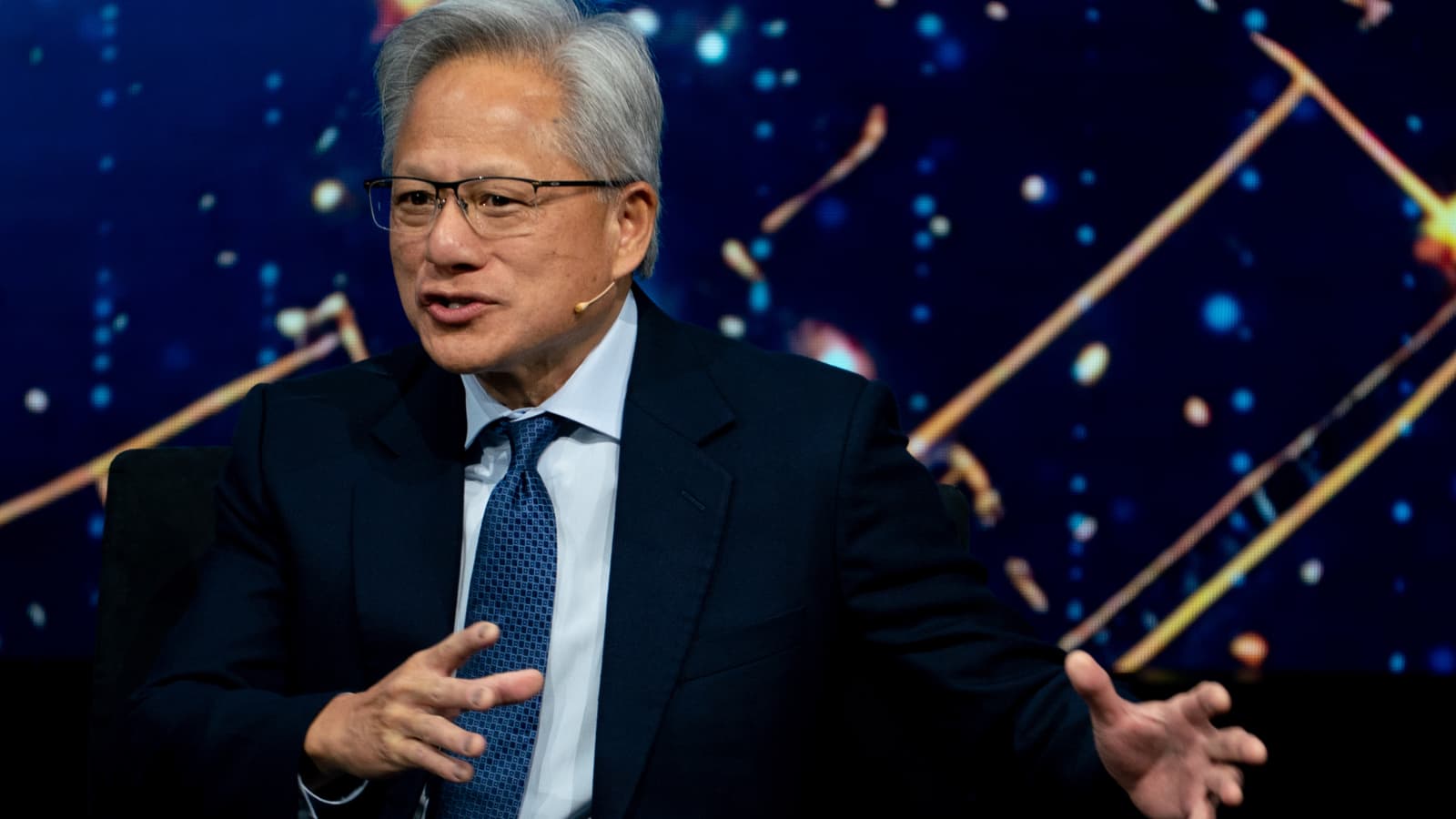Nvidia CEO Dismisses AI Bubble Concerns
By
Leah Rosenfeld
Last updated:
November 20, 2025
First Published:
November 20, 2025

Jensen Huang, chief executive officer of Nvidia Corp., during the US-Saudi Investment Forum at the Kennedy Center in Washington, DC, US, on Wednesday, Nov. 19, 2025.
Stefani Reynolds | Bloomberg | Getty Images
Debate has intensified across Wall Street in recent weeks as Nvidia prepared to release its third quarter results. Investors questioned whether the rapid acceleration of artificial intelligence spending, combined with enormous data center buildouts, signaled the emergence of an AI-driven asset bubble. Billions of dollars in capital commitments had raised doubts about whether the investment surge could be sustained or produce meaningful long-term returns.
During Nvidia’s earnings call, CEO Jensen Huang addressed those concerns immediately and forcefully. He pushed back against the idea of speculative excess, arguing that the narrative of an AI bubble does not match the market realities he and his customers are seeing.
Huang leads a company whose valuation has climbed to roughly four point five trillion dollars on the strength of unprecedented demand for its graphics processing units. Those chips remain the backbone of modern AI training and deployment. Nvidia’s client list includes every major cloud platform, such as Amazon, Microsoft, Google and Oracle. The world’s largest AI developers — including OpenAI, Meta, Anthropic and xAI — also rely on Nvidia hardware at massive scale. This gives Huang a broad window into global AI infrastructure trends.
On the call, he outlined three core reasons he believes current AI investment is justified rather than excessive. First, he said the shift away from central processors toward GPU centered systems is accelerating because computation-heavy tasks — from data processing to search algorithms to ad ranking systems — increasingly require AI support. Legacy computing is being replaced, not merely supplemented, by AI optimized systems.
Second, Huang emphasized that artificial intelligence is not only enhancing existing tools but is also giving rise to entirely new categories of applications. He highlighted opportunities in engineering, simulation, drug discovery and cybersecurity, noting that many of these emerging fields depend on high performance processing power.
Third, Huang pointed to what he called “agentic AI,” referring to autonomous applications capable of reasoning, planning and decision making with minimal user input. These models will require far more compute capacity than today’s systems, strengthening long-term demand for Nvidia’s advanced chips.
He added that Nvidia is uniquely positioned to address all three of these needs, noting that future infrastructure planning should consider the lasting effects of these technology shifts. Huang said that each underlying trend is large enough to sustain multi year growth in data center expansion.
Nvidia’s earnings release reinforced his message. The company reported revenue and profits that significantly beat expectations, while issuing forward guidance that outpaced most analyst projections. Last month, Huang forecast five hundred billion dollars in cumulative AI chip sales across 2025 and 2026. Nvidia’s updated order backlog, executives said, does not yet include several major agreements finalized in recent weeks — including new commitments from Anthropic and an expanded arrangement with Saudi Arabia.
“We expect the number to grow,” CFO Colette Kress told analysts, reaffirming that the company is on track to hit its multi year forecast.
The strong earnings did not come without broader market context. Prior to the results, Nvidia’s stock had fallen nearly eight percent in November. Other AI-linked companies had faced more severe pullbacks, with CoreWeave down forty four percent, Oracle down fourteen percent and Palantir falling seventeen percent. Much of the concern was tied to the debt companies have taken on to build new AI infrastructure.
When asked about such financing risks, Huang noted that customer funding strategies are their own responsibility. Investors have also questioned the concentration of Nvidia’s revenue among a small group of hyperscalers. Microsoft, Meta, Amazon and Alphabet recently increased their capital expenditure forecasts, now collectively expecting to invest more than three hundred eighty billion dollars this year to expand their AI capabilities.
Huang argued that these investments already generate returns, even without new business models, because Nvidia-powered systems improve recommendation engines for content and advertising across major platforms. He said that analysts will eventually recognize what is driving the AI surge, describing current commentary as too focused on capital expenditure figures rather than the fundamental technology transformations occurring beneath the surface.
Popular articles
Subscribe to unlock premium content
Why Some People Hire Professional Bystanders to Simulate Social Interaction in Public Spaces
.png)
The Rise of Micro-Memorials People Paying to Preserve Tiny Personal Moments in Luxury Miniature Sculptures
.png)
The Market of Paying Strangers to Share Their Most Embarrassing Stories in a Private Setting
.png)
Why Some People Hire Professional Bystanders to Simulate Social Interaction in Public Spaces
.png)
The Rise of Micro-Memorials People Paying to Preserve Tiny Personal Moments in Luxury Miniature Sculptures
.png)
Why Some People Hire Professional Bystanders to Simulate Social Interaction in Public Spaces
.png)








